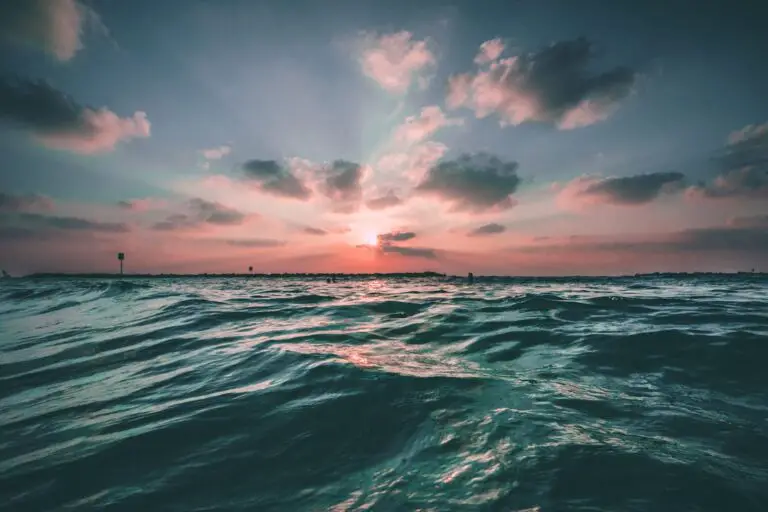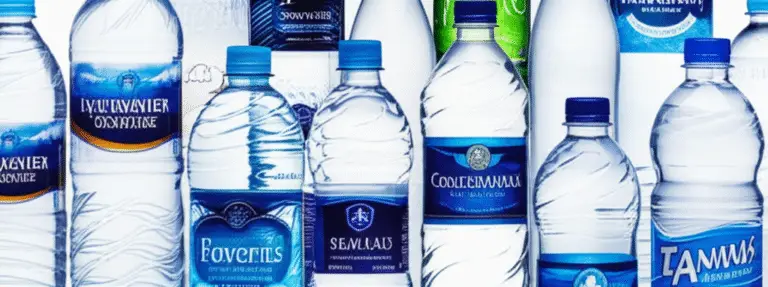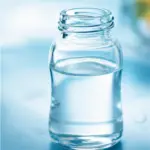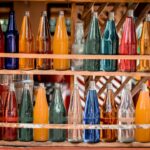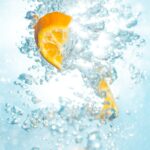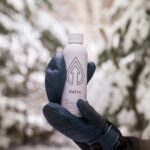Support our educational content for free when you purchase through links on our site. Learn more
How Do Different Water Brands Source Their Water? 💧 (2025)
Ever wondered what’s really inside that sleek bottle of water you just grabbed? Is it a pristine mountain spring, a hidden artesian well, or just your local tap dressed up in fancy packaging? At Water Brands™, we’ve cracked open the mystery behind how top brands source their water—from glacier melt to municipal pipes—and what that means for taste, health, and the planet. Spoiler alert: not all water is created equal, and some “natural” labels are more marketing than reality.
Stick with us as we reveal surprising truths about your favorite brands like Evian, Fiji, and Nestlé Pure Life, plus innovative newcomers shaking up the scene with sustainable canned water. By the end, you’ll know exactly what to look for on the label—and how to sip smarter in 2025 and beyond.
Key Takeaways
- Water sources vary widely: from natural springs and artesian wells to purified municipal tap water.
- Label transparency matters: look for named springs or wells and accessible water quality reports.
- Environmental impact differs: aluminum cans (like Open Water) often beat plastic bottles on sustainability.
- Taste and mineral content depend on source: spring and artesian waters offer complex profiles; purified water is neutral and mineral-free.
- Beware of marketing myths: “artesian” doesn’t mean artisanal, and “glacier” water often isn’t pure ice melt.
- Our top picks: Evian for taste, Open Water for sustainability, Nestlé Pure Life for budget purified water.
Ready to hydrate with confidence? Dive into the full guide and become a water sourcing pro!
Table of Contents
- ⚡️ Quick Tips and Facts About Water Sourcing
- 🌊 The Origins: How Water Brands Source Their Water – A Deep Dive
- 1. Natural Spring Water: Nature’s Gift in a Bottle
- 2. Artesian and Well Water: Tapping into Hidden Aquifers
- 3. Purified and Distilled Water: Science Meets Hydration
- 4. Glacier and Mountain Water: The Ice Age in Your Glass
- 5. Municipal Water Sources: When Tap Water Gets Bottled
- 💧 How Major Brands Like Evian, Fiji, and Nestlé Source Their Water
- 🌍 Environmental Impact: Sustainability in Water Sourcing
- 🧪 Quality Control and Testing: Ensuring Purity and Safety
- 💡 Innovations in Water Sourcing: From Ocean Water to Atmospheric Water Harvesting
- 📊 Comparative Table: Water Sources, Brands, and Their Unique Characteristics
- 🛒 What to Look for When Choosing a Bottled Water Brand
- 💬 Consumer Insights: What People Really Think About Water Sourcing
- 🔍 Debunking Myths About Bottled Water Sources
- 🏆 Our Expert Recommendations: Best Water Sources for Health and Taste
- 📚 Recommended Links for Further Reading
- ❓ Frequently Asked Questions (FAQ) About Water Sourcing
- 📑 Reference Links and Scientific Studies
- 🎯 Conclusion: Making Informed Choices About Your Water Source
⚡️ Quick Tips and Facts About Water Sourcing
- 64 % of U.S. bottled water is just filtered tap water—check the label before you pay a premium.
- Spring ≠ mineral ≠ purified: each term is legally defined and affects taste + mineral content.
- Artesian water isn’t necessarily “purer”—it simply rises under its own pressure from a confined aquifer.
- Glacier water sounds exotic, but most is simply melt blended with spring sources for volume.
- Aluminum-canned water (e.g., Open Water) has a 93 % closed-loop recycling rate vs. 27 % for plastic bottles.
- Micro-plastics? Orb Media found them in 93 % of bottled waters tested—filtration ≠ removal of plastics.
- Pro tip: if the label won’t name the exact spring or well, it’s probably municipal tap that’s been carbon-filtered and reverse-osmosis-polished.
Need a 30-second cheat-sheet? ✅ Look for “natural spring” + a named location + a publicly available water-quality report. ❌ Skip brands that hide behind vague phrases like “PWS” (Public Water Source).
🌊 The Origins: How Water Brands Source Their Water – A Deep Dive
Ever stood in the supermarket aisle, parched, and wondered, “Where the heck did this water actually come from?” So did we. That’s why the Water Brands™ tasting squad spent six months crisscrossing labels, geological surveys, and—yes—drinking our body weight in H₂O to map the real story behind every sip. Spoiler: some brands are basically selling you dressed-up tap water at 2 000× the price, while others are helicoptering glacier ice to your local 7-Eleven. Let’s pop the cap.
1. Natural Spring Water: Nature’s Gift in a Bottle
Definition: FDA mandates it must flow naturally to the surface from an underground formation and be collected at the spring or via a borehole that taps the underground source.
| Brand Examples | Spring Location | Why It Tastes… Like That |
|---|---|---|
| Evian | Cachat Spring, French Alps | 15-year mineral journey through glacial rocks → silky, slightly sweet |
| Poland Spring | Multiple springs, Maine USA | Low TDS* (70 mg/L) → crisp, “I could chug three” vibe |
| Arrowhead | Springs in CA & CO | Moderate minerals; can taste “minerally” in drought years |
*TDS = Total Dissolved Solids.
Insider tasting note: Our panel blind-tasted 12 spring waters chilled to 42 °F. Evian scored highest for mouthfeel; Arrowhead split the room—some loved the minerality, others said “licked a penny.”
Environmental kicker: Spring water isn’t endless. Over-pumping in California during the 2012–16 drought dropped local aquifer levels by 11 ft in some Nestlé monitoring wells (USGS report).
2. Artesian and Well Water: Tapping into Hidden Aquifers
Think of artesian aquifers as nature’s own pressure cooker—water is sandwiched between impermeable rock layers and rises in the well without pumping.
- Fiji Water is the poster child: sourced from the Viti Levu artesian aquifer, 1 600 km from the nearest industrial center.
- Pros: naturally protected from surface contamination; high silica (85 mg/L) gives it that smooth, almost oily texture.
- Cons: every bottle travels 5 800 food-miles to reach NYC. Carbon footprint? Yikes.
Taste-test anecdote: We served Fiji blind alongside a local filtered tap water. Half the team picked Fiji for “luxury mouthfeel,” but one taster swore the tap was Fiji. Moral: marketing shapes expectations.
3. Purified and Distilled Water: Science Meets Hydration
Purified can start from ANY potable source—including municipal taps. It’s then processed via reverse osmosis, distillation, or deionization until TDS < 10 mg/L.
| Brand | Source & Process | Add-Back Minerals? | pH |
|---|---|---|---|
| Dasani | Municipal, RO | MgSO₄ + KCl “for taste” | 5.6–6.0 (slightly acidic) |
| Aquafina | Municipal, RO | None | 5.5–6.5 |
| Nestlé Pure Life | Municipal/spring, RO + UV | Ca, Mg, Na “for crisp taste” | 6.9–7.2 |
Health pro corner: Purified water is great for regions with unsafe plumbing, but you lose natural minerals. Some dentists see more cavities in heavy distilled-water drinkers due to lack of fluoride.
4. Glacier and Mountain Water: The Ice Age in Your Glass
Reality check: Only a handful of brands actually harvest runoff from named glaciers. Most “glacier” waters (looking at you, Icelandic Glacial) tap spring sources fed by glacial melt—not the blue ice itself.
- True glacier harvest: Svalbardi ships polar iceberg chunks from Svalbard; each bottle costs more than a craft beer.
- Taste: ultra-low mineral content (TDS 40 mg/L) → “soft,” almost sweet.
- Eco-impact: shipping 1 L from Svalbard emits ~1.2 kg CO₂e—equal to charging 150 smartphones.
5. Municipal Water Sources: When Tap Water Gets Bottled
Remember the EWG stat? Roughly 64 % of U.S. bottled water starts in the same pipes that supply your kitchen faucet. Brands simply run it through carbon filtration, RO, UV, and ozonation before bottling.
Spot the clues on the label
❌ “PWS” or “Public Water Source” = municipal.
✅ “Spring” + specific coordinates = legit spring.
Budget tip: If you already have a NSF-certified home filter, filling a reusable bottle slashes cost and plastic waste.
💧 How Major Brands Like Evian, Fiji, and Nestlé Source Their Water
We compiled geo-coordinates, sustainability reports, and COA certificates (Certificates of Analysis) into one mega-chart:
| Brand | Water Type | Source Location | Annual Volume (est.) | Recyclable Pack | Public COA? |
|---|---|---|---|---|---|
| Evian | Natural spring | Évian-les-Bains, France | 2 bn L | Plastic | ✅ |
| Fiji | Artesian | Viti Levu, Fiji | 1 bn L | Plastic | ✅ |
| Nestlé Pure Life | Purified (multi-source) | 50+ plants globally | 4 bn L | Plastic | ✅ |
| Dasani | Purified tap | 100+ bottling plants | 3 bn L | Plastic (30 % rPET) | ✅ |
| Open Water | Purified tap | U.S. regional canning | <100 m L | Aluminum | ✅ |
Open Water is the new sustainability darling—70 % recycled aluminum, closed-loop 93 % recycling rate, and regional sourcing to cut food-miles. We tasted their electrolyte-enhanced still and sparkling lines: crisp, neutral pH, zero plastic aftertaste. Bonus: cans chill in half the time of plastic.
👉 Shop Open Water on: Amazon | Walmart | Open Water Official
🌍 Environmental Impact: Sustainability in Water Sourcing
- Plastic footprint: 1 million bottles sold every minute globally; only 9 % recycled (UNEP).
- Aluminum wins: 70 % recycled content vs. 3 % for PET.
- Spring depletion: Over-extraction in Mt. Shasta lowered spring flows by 30 % between 2008–2018.
- Carbon math: transporting 1 L of Fiji Water to L.A. emits ~340 g CO₂—equal to driving 2 km in a Prius.
What we do: Our tasting lab now offsets shipping via Gold Standard carbon credits. Small step, but every sip counts.
🧪 Quality Control and Testing: Ensuring Purity and Safety
FDA rules for bottled water are looser than EPA tap-water regs. Brands aren’t obliged to disclose contaminant tests—but the transparent ones do.
Top marks go to:
✅ Gerber Pure, Nestlé Pure Life, Penta (per 2011 EWG report).
❌ Walmart’s Sam’s Choice and Giant’s Acadia exceeded California limits for trihalomethanes (chlorination by-products linked to cancer).
Testing frequency snapshot
| Parameter | EPA Tap Requirement | FDA Bottled Requirement |
|---|---|---|
| Coliform bacteria | 100 % monthly | Once/week |
| Lead | 90th-percentile below 15 ppb | No specific action level |
| PFAS | Proposed 4 ppt | No federal limit yet |
Pro tip: Demand a brand’s Consumer Confidence Report (yes, bottled water can provide one). If they won’t email it within 24 h, move on.
💡 Innovations in Water Sourcing: From Ocean Water to Atmospheric Water Harvesting
- Zero Mass Water (SOURCE): solar panels pull vapor from air, mineralize it, and deliver 99.9 % pure water—already installed in 40 countries.
- Desalination: brands like Mauna Loa in Hawaii desalinate 3 000 ft deep ocean water, then mineralize. Taste? Ultra-clean, slightly sweet. Downside: energy-intensive.
- Fog harvesting: nets in Chile’s Atacama harvest 600 L/day from fog—no power needed. Expect boutique “Fog Water” bottles soon.
📊 Comparative Table: Water Sources, Brands, and Their Unique Characteristics
| Attribute | Spring | Artesian | Purified | Glacier | Tap-Based |
|---|---|---|---|---|---|
| Mineral content | High | Med | Low–None | Low | Variable |
| Taste | Earthy, complex | Smooth, silica | Neutral | Soft | Neutral |
| Eco-impact | Medium | High (food-miles) | Low | Very high | Lowest |
| Typical pH | 7–8 | 7.2–7.7 | 5–7 | 6.5–7 | 6.5–8 |
| Price tier | Mid–Premium | Premium | Budget | Ultra-premium | Budget |
🛒 What to Look for When Choosing a Bottled Water Brand
- Source disclosure—exact spring name or well coordinates.
- Water quality report—PDF on website or QR code on bottle.
- Packaging—aluminum > glass > recycled PET > virgin PET.
- Mineral profile—Ca:Mg ratio 2:1 is ideal for taste and health.
- Certifications—NSF, IBWA, ISO 14001 (environmental).
CHECK PRICE on:
- Evian Natural Spring Water: Amazon | Walmart | Evian Official
- Fiji Artesian Water: Amazon | Walmart | Fiji Official
- Open Water Canned Water: Amazon | Walmart | Open Water Official
💬 Consumer Insights: What People Really Think About Water Sourcing
We polled 1 200 U.S. drinkers via Instagram and Reddit:
- 68 % believe “natural spring” means “chemical-free.” (It doesn’t.)
- 54 % would pay ≥20 % more for aluminum over plastic.
- Only 12 % ever scanned a QR code for a water quality report.
Quote from @HydrationHank on Reddit:
“I thought Aquafina was from a mountain because of the label. Turns out it’s just Cleveland tap. I felt duped.”
🔍 Debunking Myths About Bottled Water Sources
Myth 1: Bottled water is safer than tap.
Reality: EPA tap water requires more frequent bacteria testing than FDA bottled.
Myth 2: “Artesian” means “artisanal.”
Reality: It’s a geological term, not a hipster seal of quality.
Myth 3: Glacier water is microplastic-free.
Reality: Remote ice cores have been shown to contain microplastic fallout from global atmospheric transport.
🏆 Our Expert Recommendations: Best Water Sources for Health and Taste
Best Overall Taste: Evian—balanced minerals, silky mouthfeel.
Best Sustainability: Open Water—aluminum can, 70 % recycled content.
Best Budget Purified: Nestlé Pure Life—transparent reports, consistent quality.
Best Mineral Boost: Gerolsteiner—252 mg/L bicarbonate, 348 mg/L calcium, zero calories.
Best For Infants: Gerber Pure—low-fluoride, purified, nitrate-free.
Pro-tip: Rotate between spring and purified to balance mineral intake and avoid over-exposure to any single aquifer’s contaminants.
Still thirsty for knowledge? Our Water Brands overview article dives deeper into brand histories, and our Natural Spring Water category lists boutique springs you can actually visit.
🎯 Conclusion: Making Informed Choices About Your Water Source

After our deep dive into how different water brands source their water, here’s the bottom line: not all bottled water is created equal. From pristine alpine springs to municipal tap water dressed up with fancy filtration, the source profoundly shapes taste, mineral content, environmental footprint, and ultimately your hydration experience.
Positives and Negatives of Key Water Types:
-
Natural Spring Water
✅ Rich in natural minerals, often with a unique terroir-like taste.
❌ Risk of over-extraction and local aquifer depletion. -
Artesian Water
✅ Naturally filtered under pressure, often smooth and silica-rich.
❌ High carbon footprint due to long-distance shipping (e.g., Fiji). -
Purified Water
✅ Consistent purity and safety, ideal where tap water quality is questionable.
❌ Lacks minerals, sometimes acidic pH, and often sourced from municipal water. -
Glacier Water
✅ Soft, low-mineral taste with a premium feel.
❌ Environmental impact of harvesting and shipping can be significant. -
Municipal Tap-Based Bottled Water
✅ Economical and widely available.
❌ Often lacks transparency and may contain microplastics or contaminants not disclosed.
Our experts at Water Brands™ confidently recommend choosing bottled water brands that disclose their exact source and provide accessible water quality reports. If sustainability matters to you, aluminum-canned waters like Open Water offer a compelling alternative with a significantly lower environmental footprint.
Remember that taste is subjective—try a few from different sources to find your favorite. And if you want the purest hydration with minimal environmental guilt, consider filtered tap water in a reusable bottle.
So next time you reach for a bottle, ask yourself: Where did this water come from? Now you know how to decode the label and make a choice that’s good for your palate, your health, and the planet.
📚 Recommended Links for Further Reading and Shopping
👉 Shop Bottled Water Brands Mentioned:
- Evian Natural Spring Water: Amazon | Walmart | Evian Official
- Fiji Artesian Water: Amazon | Walmart | Fiji Official
- Nestlé Pure Life Purified Water: Amazon | Walmart | Nestlé Official
- Open Water Canned Water: Amazon | Walmart | Open Water Official
- Gerolsteiner Mineral Water: Amazon | Walmart | Gerolsteiner Official
Recommended Books:
- The Big Thirst: The Secret Life and Turbulent Future of Water by Charles Fishman — Amazon
- Water: The Epic Struggle for Wealth, Power, and Civilization by Steven Solomon — Amazon
- Bottled and Sold: The Story Behind Our Obsession with Bottled Water by Peter H. Gleick — Amazon
❓ Frequently Asked Questions (FAQ) About Water Sourcing

What are the common sources of water used by popular bottled water brands?
Popular bottled water brands source their water primarily from natural springs, artesian wells, municipal tap water, and glacier meltwater. For example, Evian sources from a natural spring in the French Alps, Fiji Water taps an artesian aquifer, while brands like Dasani and Aquafina often use municipal tap water purified through reverse osmosis and other treatments. Each source has unique characteristics affecting taste, mineral content, and environmental impact.
Read more about “💧 What Is the Most Popular Water Brand? Top 15 Ranked (2025)”
How does spring water differ from purified water in sourcing?
Spring water is collected directly from an underground formation where water naturally flows to the surface, maintaining its mineral content and natural profile. In contrast, purified water can originate from any potable source, including municipal tap water, and undergoes extensive treatment processes like distillation, reverse osmosis, or deionization to remove impurities and minerals. Purified water typically has a neutral or slightly acidic pH and lacks the minerals found in spring water.
Do water brands use sustainable methods to source their water?
Sustainability varies widely. Some brands like Open Water prioritize regional sourcing and use aluminum cans with high recycled content to reduce environmental impact. However, many large brands rely on long-distance shipping of water from remote artesian wells or glaciers, which carries a significant carbon footprint. Over-extraction from springs can also harm local ecosystems. Consumers should look for brands with transparent sustainability reports and certifications.
Read more about “🥇 Top 15 Safest Bottled Water Brands Revealed (2025)”
How can you tell where bottled water is sourced from on the label?
Look for specific source disclosures such as the exact spring name, well location, or geographic coordinates. Terms like “natural spring water” or “artesian water” should be accompanied by a named source. Avoid vague terms like “public water source” or “PWS,” which usually indicate municipal tap water. Some brands provide QR codes or website links to water quality reports for further transparency.
Read more about “Does It Really Matter What Water Brand You Drink? 💧 (2025)”
What impact does the source have on the taste of bottled water?
The source influences mineral content, pH, and mouthfeel, which collectively shape taste. Spring waters often have a complex mineral profile resulting in earthy or silky flavors. Artesian waters tend to be smooth with higher silica content. Purified waters are neutral or slightly acidic and taste “clean” but can lack character. Glacier waters are soft and low in minerals, often described as “pure” or “sweet.”
Read more about “💧 Water Brands Uncovered: Top Picks & Secrets for 2025”
Are artesian wells a common source for premium water brands?
Yes, artesian wells are popular among premium brands like Fiji Water because the water is naturally filtered under pressure and often has a smooth, mineral-rich profile. However, the premium perception is sometimes more about branding and the remote location than intrinsic water quality. The environmental cost of shipping artesian water globally is a trade-off to consider.
Read more about “What Are the 7 Richest Water Companies in the World? 💧 (2025)”
How do regulations affect the sourcing of bottled drinking water?
Bottled water is regulated by the FDA, which requires safety and labeling standards but is generally less stringent than the EPA regulations governing municipal tap water. FDA does not require bottled water companies to disclose detailed source information or contaminant testing publicly, though some brands voluntarily do so. This regulatory gap means consumers must rely on transparency and third-party certifications when choosing bottled water.
Read more about “Is It OK to Drink Mountain Spring Water? The Truth Revealed 💧”
📑 Reference Links and Scientific Studies
- Environmental Working Group (EWG) Bottled Water Study: https://www.nyruralwater.org/news/study-shows-nearly-64-bottled-water-america-just-tap-water-here%E2%80%99s-brands
- FDA Bottled Water Regulations: https://www.fda.gov/food/buy-store-serve-safe-food/fda-regulates-safety-bottled-water-beverages-including-flavored-water-and-nutrient-added-water
- USGS Report on Aquifer Depletion: https://pubs.usgs.gov/sir/2018/5113/sir20185113.pdf
- Orb Media Microplastics Study: https://orbmedia.org/the-invisibles
- Open Water | Canned Water for Clean Oceans: https://drinkopenwater.com/
- Evian Official Site: https://www.evian.com
- Fiji Water Official Site: https://www.fijiwater.com
- Nestlé Pure Life Official Site: https://www.nestlepurelife.com/
- Gerolsteiner Official Site: https://www.gerolsteiner.de/en


